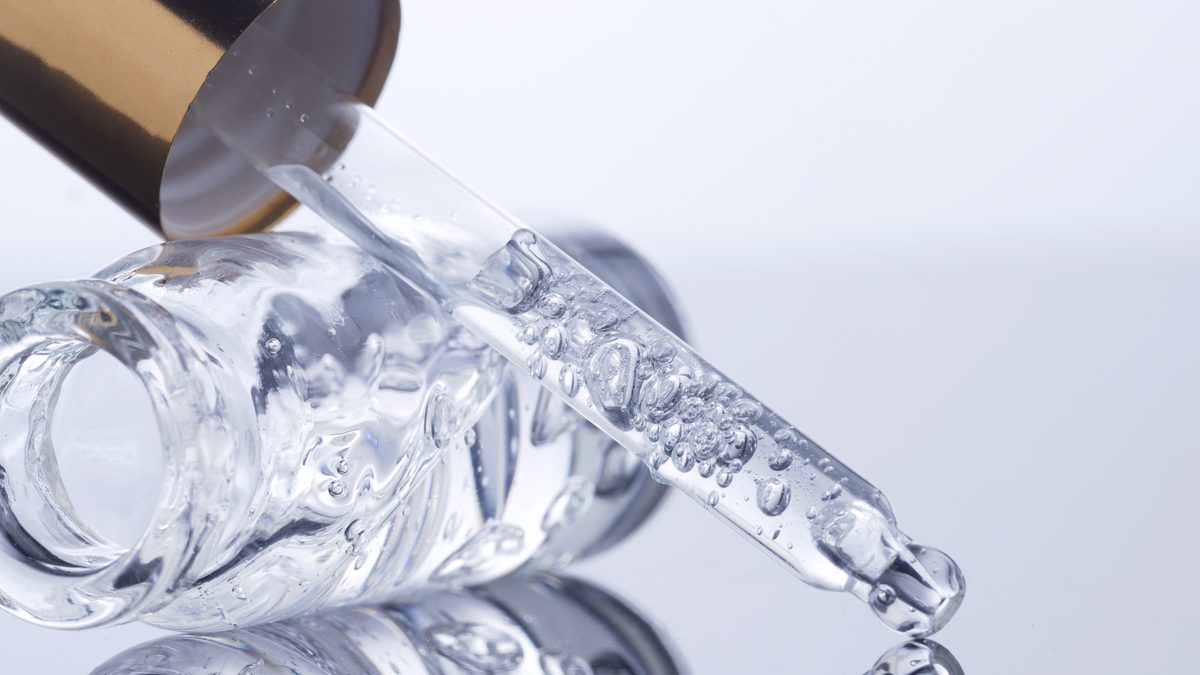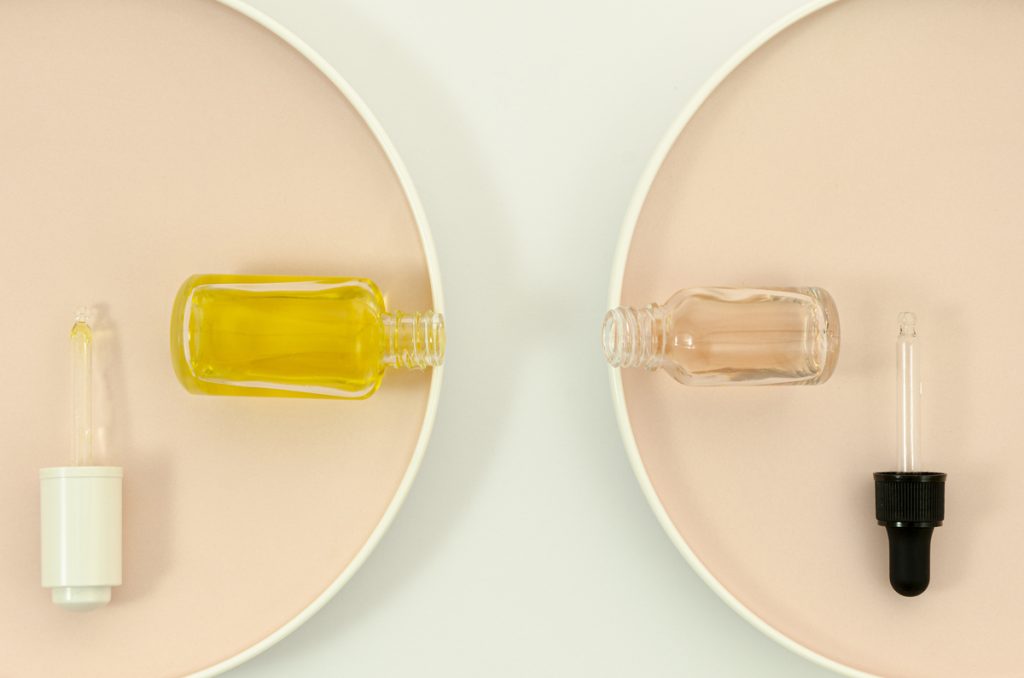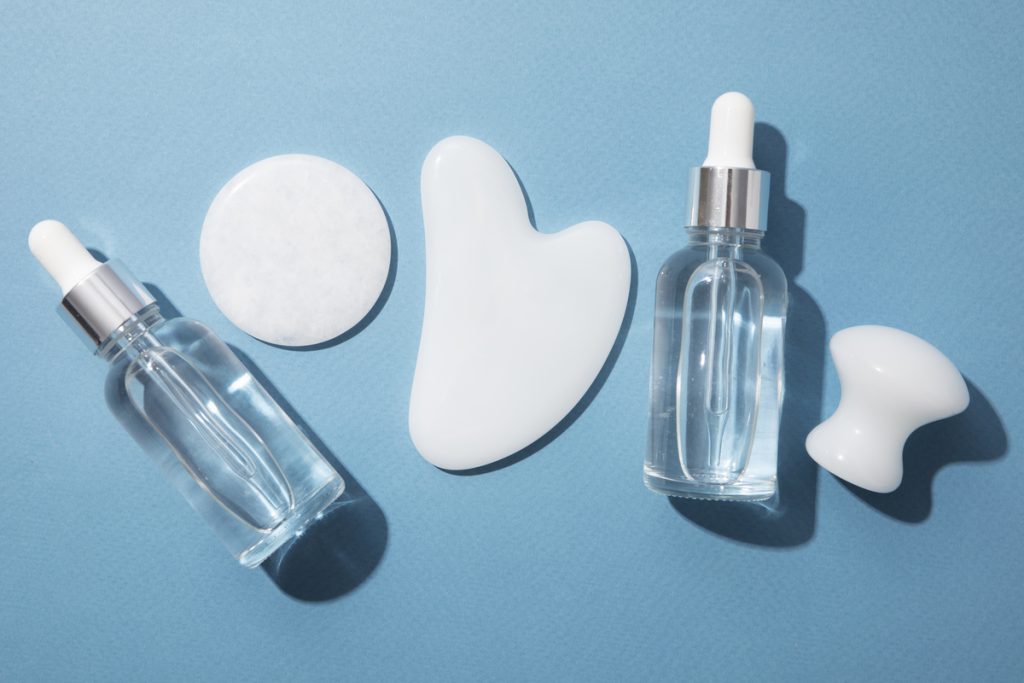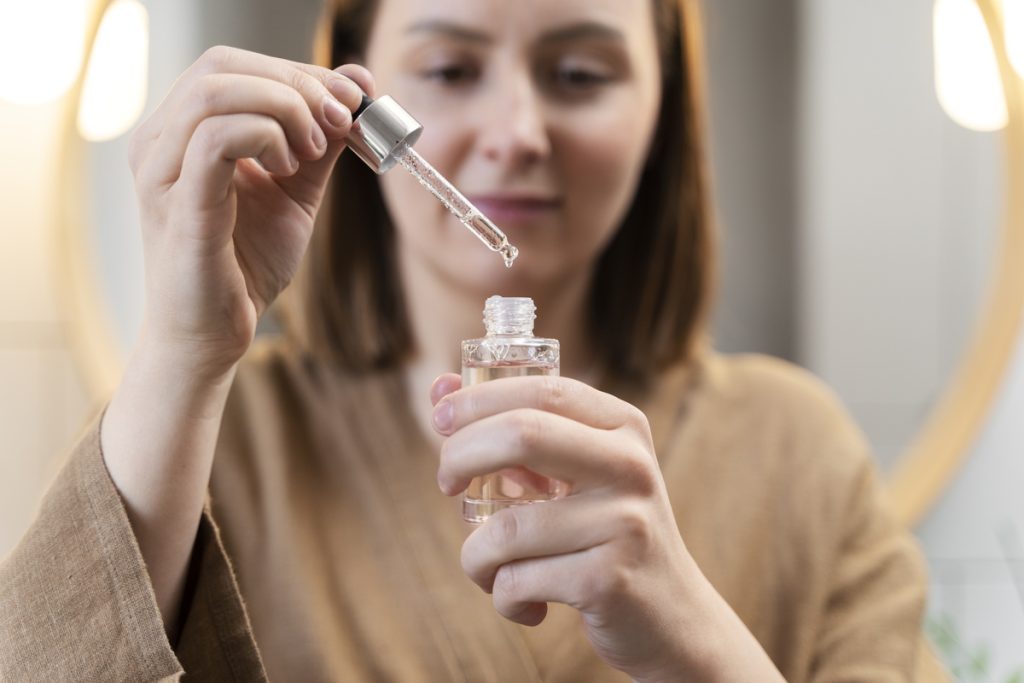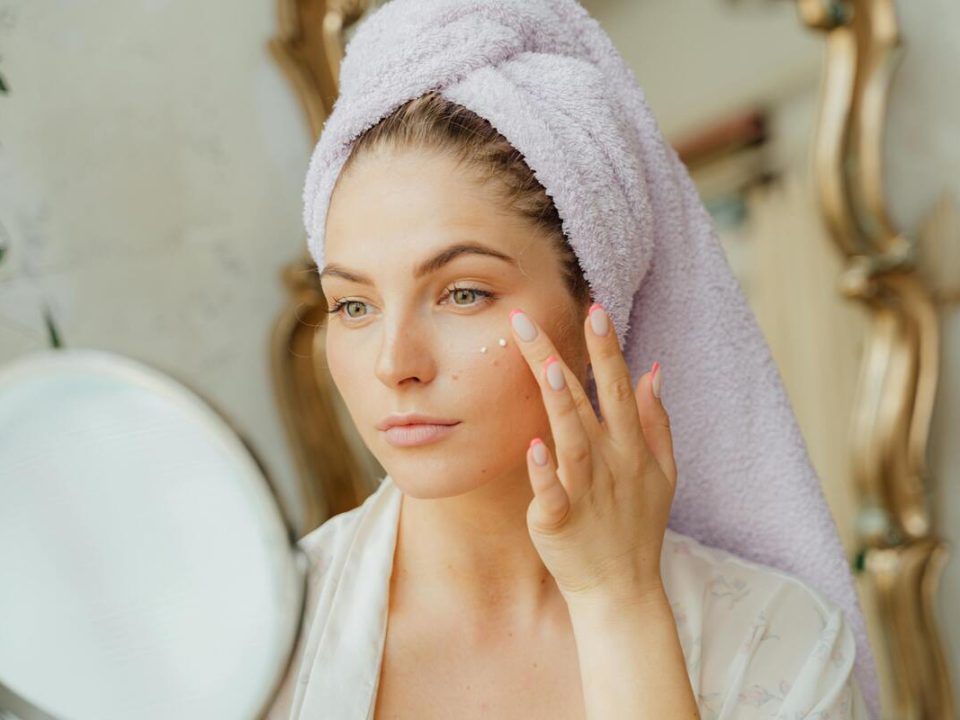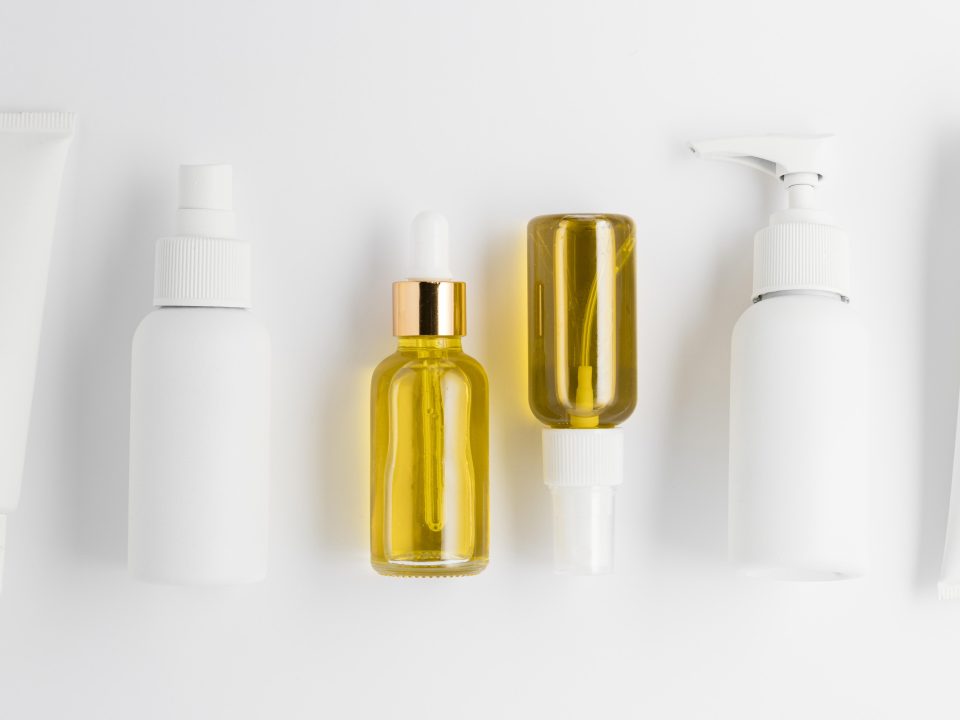15% off all products with code:Summer25Shop now

What Not To Mix With Salicylic Acid Skincare?
March 7, 2024
How To Use Salicylic Acid On Face?
March 7, 2024Hyaluronic acid and salicylic acid are two popular ingredients in skincare, each with distinct benefits and target concerns. However, choosing between the two depends on individual needs and skin type. This outline explores the properties, functions, and potential applications of both acids, guiding you toward a well-informed decision for your skincare routine.
Comparing Salicylic Acid and Hyaluronic Acid
Target Skin Concerns
Acne
Salicylic Acid:
- Mechanism: Salicylic acid is a BHA that works by:
- Exfoliating: It loosens dead skin cells and unclogs pores, preventing future breakouts and reducing the size of existing ones.
- Anti-inflammatory: It can calm redness and inflammation associated with acne lesions.
- Sebum regulation: It helps control excess oil production, a contributing factor to acne development.
- Effectiveness: Salicylic acid is generally considered more effective in directly treating acne due to its combined actions. However, it’s important to choose the right concentration and frequency to avoid irritation.
Hyaluronic Acid:
- Mechanism: While not directly addressing acne, hyaluronic acid can play a supportive role:
- Post-inflammatory hydration: After acne lesions heal, dryness and irritation may occur. Hyaluronic acid can help replenish moisture and promote faster healing.
- Barrier strengthening: By keeping skin hydrated, hyaluronic acid can contribute to a stronger skin barrier, potentially making it less susceptible to future breakouts.
Dryness
Salicylic Acid:
- Potential impact: Salicylic acid can be drying, especially at higher concentrations or with frequent use. This can worsen dryness and exacerbate existing concerns like flaking and irritation.
Hyaluronic Acid:
- Mechanism: Hyaluronic acid excels in addressing dryness:
- Humectant properties: It attracts and retains water in the skin, providing intense hydration.
- Plumping effect: By drawing moisture into the skin, hyaluronic acid creates a plumper and smoother appearance.
Aging
Hyaluronic Acid:
- Mechanism: Hyaluronic acid offers benefits for aging skin:
- Hydration: As skin ages, hyaluronic acid levels naturally decline, leading to dryness and wrinkles. Supplementing with hyaluronic acid can counteract this by plumping and hydrating the skin.
- Fine lines and wrinkles: By keeping the skin hydrated and plump, hyaluronic acid can help reduce the appearance of fine lines and wrinkles.
Salicylic Acid:
- Potential benefit: While not directly targeting wrinkles, salicylic acid might indirectly contribute to anti-aging:
- Cell turnover: Salicylic acid can promote exfoliation, encouraging the removal of dead skin cells and stimulating the production of new ones. This may contribute to a more youthful appearance, although research is still ongoing.
Sensitive Skin
Hyaluronic Acid:
- Gentleness: Generally, hyaluronic acid is well-tolerated by most skin types, including sensitive skin. However, choosing products free of fragrance and other potential irritants is still advisable.
Salicylic Acid:
- Increased sensitivity: Salicylic acid can be more irritating, especially for sensitive skin. Symptoms like dryness, redness, and stinging may occur.
- Cautious use: Patch testing is crucial before widespread application on sensitive skin. Additionally, starting with lower concentrations and infrequent use is recommended to minimize irritation.
Product Forms and Applications
Salicylic Acid:
- Cleansers: Gentle cleansers with low concentrations (0.5-2%) can help with mild acne without over-drying.
- Toners: Can help control oil and remove dead skin cells, but may be too drying for some.
- Serums: Offer a concentrated form for targeted treatment of acne-prone areas. Choose formulations with soothing ingredients to mitigate irritation.
- Spot treatments: Highly concentrated for individual blemishes, but use cautiously to avoid excessive drying.
Hyaluronic Acid:
- Serums: Offer the highest concentration for targeted hydration. Look for lightweight formulas that penetrate efficiently.
- Moisturizers: Formulated to lock in moisture and provide long-lasting hydration. Choose textures based on skin type (lotion for oily, cream for dry).
- Masks: Intensive treatments for a temporary boost of hydration. Choose masks with calming and soothing ingredients for sensitive skin.
- Eye creams: Formulated specifically for the delicate eye area, often combined with other ingredients like peptides for wrinkle reduction.
Combination and Layering
Benefits of combining:
- Oily, acne-prone skin with dehydration: Combining salicylic acid for acne control with hyaluronic acid for hydration can be beneficial. However, choose products formulated for sensitive skin and prioritize gentle use.
- Mature skin with wrinkles and dryness: Hyaluronic acid can address dryness and plumpness, while salicylic acid may indirectly contribute to cell turnover for a more youthful appearance. Layering these ingredients strategically can maximize benefits while minimizing irritation.
Importance of proper application order:
- General rule: Apply products in order of thinnest consistency to thickest. This allows each layer to penetrate effectively without hindering the absorption of subsequent layers.
- Example for acne-prone skin with dehydration:
- Gentle cleanser: Wash your face to remove makeup, dirt, and oil.
- Salicylic acid serum: Apply a thin layer to targeted areas with acne concerns.
- Hyaluronic acid serum: Apply a thin layer all over your face for hydration.
- Moisturizer: Apply a moisturizer suitable for your skin type to lock in moisture.
Additional Considerations:
- Patch testing: Always patch test any new product on a small area of your inner arm before applying it to your face. Wait 24 hours to monitor for any signs of irritation before using the product further.
- Sun protection: Both salicylic acid and hyaluronic acid can increase sun sensitivity. Use a broad-spectrum sunscreen with SPF 30 or higher daily, even on cloudy days.
- Consult a dermatologist: If you have any concerns about your skin or are unsure which products are right for you, consult a dermatologist for personalized advice. They can recommend products based on your specific skin type and needs and provide guidance on proper use and potential interactions with other medications or skincare products.
By understanding the distinct functionalities and applications of salicylic acid and hyaluronic acid, individuals can make informed choices for their specific skin concerns. Remember, neither ingredient inherently surpasses the other, and choosing the right one comes down to individual needs and a holistic approach to skincare.
Understanding Salicylic Acid and Hyaluronic Acid
Salicylic Acid
Definition and classification (Beta Hydroxy Acid – BHA):
- Definition: Salicylic acid is a keratolytic and comedolytic agent, meaning it can break down keratin (the protein that makes up the outer layer of skin) and unclog pores.
- Classification: Salicylic acid belongs to the class of Beta Hydroxy Acids (BHAs). Compared to Alpha Hydroxy Acids (AHAs), BHAs are oil-soluble, allowing them to penetrate deeper into the skin and target sebum within pores.
Origin:
- Natural sources: Salicylic acid can be found naturally in certain plants, such as willow bark (the traditional source) and meadowsweet.
- Synthetic production: Today, most salicylic acid used in skincare products is synthetically produced due to its consistency and affordability.
Mechanism of action:
- Exfoliation: Salicylic acid works by loosening the bonds between dead skin cells, allowing them to shed more readily. This helps to:
- Prevent clogged pores: By removing dead skin cells that can trap oil and dirt, salicylic acid helps keep pores clear, reducing the formation of blackheads and whiteheads.
- Promote smoother skin texture: Exfoliation can also help improve the overall texture and appearance of the skin by removing rough, uneven patches.
- Anti-inflammatory properties: Salicylic acid possesses mild anti-inflammatory properties that can help to:
- Reduce redness and swelling: This can be beneficial for acne breakouts, which are often characterized by inflammation.
- Soothe irritated skin: This can be helpful for reducing irritation caused by other factors, such as shaving or harsh weather conditions.
- Sebum regulation: Salicylic acid can help to:
- Normalize oil production: By gently dissolving excess sebum within pores, salicylic acid can help to control oily skin and reduce the shine associated with it.
Benefits:
- Treating and preventing acne breakouts: Salicylic acid’s exfoliating and anti-inflammatory properties make it effective in treating and preventing various forms of acne, including blackheads, whiteheads, and papules/pustules.
- Reducing blackheads and whiteheads: By dissolving the sebum and dead skin cells that clog pores, salicylic acid can effectively clear existing blackheads and whiteheads and prevent new ones from forming.
- Minimizing oily skin: By regulating sebum production and unclogging pores, salicylic acid can help control shine and leave the skin feeling less greasy.
- Addressing keratosis pilaris (bumpy skin): Salicylic acid’s exfoliating properties can help to improve the appearance of keratosis pilaris, a condition characterized by small, rough bumps on the upper arms, thighs, and buttocks.
Potential side effects:
- Dryness and irritation: Salicylic acid, especially at higher concentrations or with frequent use, can dry out the skin and cause irritation, particularly for individuals with sensitive skin.
- Increased sun sensitivity: Salicylic acid can thin the outer layer of the skin, making it more susceptible to sun damage. It is crucial to use sunscreen daily with SPF 30 or higher when using salicylic acid to protect your skin.
Additional points to consider:
- Salicylic acid comes in various concentrations, with over-the-counter products typically ranging from 0.5% to 2%. Higher concentrations may be more effective but also more likely to cause irritation.
- Salicylic acid can be found in various skincare products, including cleansers, toners, serums, and spot treatments. The choice of product form depends on individual needs and skin sensitivity.
Hyaluronic Acid
Definition and classification (Humectant):
- Definition: Hyaluronic acid (HA) is a naturally occurring glycosaminoglycan, a type of sugar molecule found in the body. It is highly hygroscopic, meaning it has a strong affinity for attracting and retaining water molecules.
- Classification: HA is classified as a humectant. Humectants draw moisture from the environment or deeper layers of the skin to the upper layers, helping to keep the skin hydrated and supple.
Origin:
- Natural occurrence: HA is naturally present in the human body, found in high concentrations in the skin, connective tissues, and synovial fluid (lubricating fluid in joints).
- Plant sources: HA can also be obtained from certain plant sources, like soy and fermented grains, through a fermentation process. However, the composition and effectiveness of plant-derived HA can vary compared to naturally occurring HA in the body.
Mechanism of action:
- Moisture attraction and retention: HA functions by acting like a moisture magnet:
- Humectant properties: It draws water from the environment (especially in humid conditions) and deeper layers of the skin to the upper layers (stratum corneum).
- Water-holding capacity: Each molecule of HA can hold up to 1,000 times its weight in water, creating a reservoir of hydration within the skin.
- Plumping and hydrating effect: By attracting and retaining water, HA plumps and hydrates the skin, resulting in a:
- Improved appearance: The skin appears smoother, dewier, and more youthful due to increased hydration and volume.
- Reduced fine lines and wrinkles: As the skin becomes plumped with moisture, the appearance of fine lines and wrinkles, often exacerbated by dryness, can be visibly minimized.
- Promoting wound healing: HA plays a role in wound healing by:
- Creating a moist environment: It provides a hydrated environment at the wound site, which is conducive to cell migration and tissue repair.
- Anti-inflammatory properties: It exhibits mild anti-inflammatory effects, potentially reducing inflammation and promoting faster healing.
Benefits:
- Enhancing skin hydration and plumpness: HA is renowned for its ability to intensely hydrate and plump the skin, leading to a smoother, dewier, and more youthful appearance.
- Reducing the appearance of fine lines and wrinkles: By keeping the skin hydrated and plump, HA can help minimize the appearance of fine lines and wrinkles, especially those caused by dehydration.
- Promoting overall skin health and elasticity: HA contributes to maintaining healthy skin by:
- Supporting skin barrier function: Adequate hydration is crucial for a healthy skin barrier, which protects the skin from environmental aggressors and irritation.
- Improving skin elasticity: HA’s hydrating properties can contribute to improved skin elasticity, making it appear more supple and youthful.
Potential side effects:
- Temporary stinging or burning sensation: In rare cases, some individuals might experience a temporary stinging or burning sensation upon initial application of HA products, especially those formulated with high concentrations or combined with other active ingredients. This usually subsides within a few minutes and may indicate temporary skin adjustment.
Additional points to consider:
- HA comes in various molecular weights, with lower molecular weight HA penetrating deeper into the skin and higher molecular weight HA forming a film on the surface to prevent moisture loss.
- HA is generally well-tolerated by most skin types, even sensitive skin. However, patch testing is still recommended before widespread application to assess individual sensitivity.
- HA is a versatile ingredient found in various skincare products, including serums, moisturizers, masks, and eye creams. Choosing the right product form depends on individual needs and skin type.
Choosing the Right Acid for Your Skin
Skin Type
Oily/Acne-Prone Skin
Salicylic acid: Can be beneficial for:
- Treating and preventing acne: Its ability to exfoliate, reduce inflammation, and regulate sebum makes it effective in managing various forms of acne.
- Minimizing oiliness: By unclogging pores and controlling sebum production, salicylic acid can help reduce the shine associated with oily skin.
Considerations:
- Gentle use and hydration are crucial: While salicylic acid can be beneficial for oily skin, it’s crucial to use it gently to avoid over-drying or irritation. Opt for lower concentrations (0.5-1%) and start with infrequent use (2-3 times per week) to assess your skin’s tolerance.
- Combined approach with hydrating ingredients: Consider incorporating hydrating ingredients like hyaluronic acid or ceramides into your skincare routine to balance the drying effects of salicylic acid and maintain overall skin health.
Dry/Sensitive Skin
Hyaluronic acid: Generally better suited for:
- Intense hydration and plumping: Its humectant properties effectively attract and retain moisture, addressing dryness and promoting a smoother, plumper appearance.
- Supporting skin barrier function: Maintaining proper hydration is crucial for a healthy skin barrier, which protects against environmental aggressors and irritation.
Salicylic acid considerations:
- Potential for irritation: Dry and sensitive skin is more susceptible to irritation from salicylic acid. If using, choose very low concentrations (0.5% or less) and apply cautiously, monitoring for any signs of irritation.
- Patch testing is essential: Always patch test new products containing salicylic acid on a small area of your inner arm before applying them to your face.
Combination Skin
- Targeted application: Consider using both salicylic acid and hyaluronic acid strategically to address specific concerns:
- Salicylic acid: Apply it to areas prone to oiliness and acne, like the T-zone (forehead, nose, chin).
- Hyaluronic acid: Apply it to drier areas of your face, like the cheeks and eye area, for intense hydration.
- Choose gentle formulations: Opt for gentle formulations of both salicylic acid and hyaluronic acid to minimize the risk of irritation, especially on sensitive areas.
Individual Needs
Specific Skin Concerns:
- Acne: Prioritize salicylic acid for its ability to directly address acne by exfoliating, reducing inflammation, and regulating sebum. However, consider incorporating hyaluronic acid for post-inflammatory hydration and overall skin health.
- Wrinkles and dry skin: Hyaluronic acid is the primary choice for its hydrating and plumping properties, which can minimize the appearance of wrinkles and dryness. However, low-concentration salicylic acid might be suitable for occasional use to gently exfoliate and promote cell turnover, contributing to a more youthful appearance.
- Other concerns: Research other ingredients and products targeted to address specific concerns beyond acne, wrinkles, and dryness, and consider consulting a dermatologist for personalized advice.
Tolerance to Potential Side Effects:
- Assess your skin’s response: Pay close attention to how your skin reacts to new products containing salicylic acid and hyaluronic acid. Look for signs of irritation, such as redness, dryness, itching, or burning.
- Adjust usage accordingly: If you experience any irritation, discontinue use or reduce the frequency and concentration of the product. Consult a dermatologist if the irritation persists.
Consulting a Dermatologist:
- Professional guidance: A dermatologist can provide personalized recommendations based on your individual skin type, specific concerns, and medical history. They can help you choose suitable products and create a tailored skincare routine to achieve your desired results.
- Addressing specific conditions and sensitivities: If you have any underlying skin conditions, such as eczema or rosacea, or are particularly sensitive to certain ingredients, consulting a dermatologist is crucial. They can recommend products and strategies that are safe and effective for your specific needs and minimize the risk of complications.
Remember, choosing the right acid for your skin is a journey of understanding your individual needs and finding the best balance for your specific skin type and concerns. By considering these factors and seeking professional guidance when necessary, you can achieve a healthy, balanced, and radiant complexion.
Conclusion
Recap: A Symphony of Benefits
Both salicylic acid and hyaluronic acid offer unique benefits for various skin concerns. Understanding their individual strengths and limitations is crucial for making informed choices and crafting a personalized skincare routine.
- Salicylic acid: Shines as a powerful exfoliant, combatting acne breakouts, regulating oil production, and minimizing the appearance of enlarged pores. However, its potential for dryness and irritation necessitates careful use and awareness of individual skin sensitivity.
- Hyaluronic acid: Reigns supreme in its ability to attract and retain moisture, resulting in a plumper, smoother, and more hydrated complexion. Additionally, it contributes to a healthy skin barrier, crucial for protecting against environmental aggressors.
The Art of Self-Knowledge: Understanding Your Skin’s Unique Story
The key to incorporating these acids effectively lies in individual assessment. By understanding your specific skin type (oily, dry, combination, sensitive) and addressing your unique concerns (acne, wrinkles, dryness), you can tailor your skincare routine to achieve optimal results.
A Collaborative Approach: Combining Strategies, Not Seeking Instant Gratification
Instead of seeking a single “miracle ingredient” for quick fixes, consider combining ingredients strategically. In some cases, leveraging the strengths of both salicylic acid and hyaluronic acid can yield synergistic benefits. For example, individuals with oily, acne-prone skin might benefit from using a targeted salicylic acid treatment on affected areas while incorporating a hyaluronic acid serum or moisturizer for overall hydration. However, prioritizing gentle formulations and cautious application is crucial to minimize the risk of irritation.
Remember: Consistency is key! Building a sustainable skincare routine requires patience and dedication. Focus on long-term skin health and prioritize ingredients that complement your unique needs. If you encounter any challenges or have specific concerns, consulting a dermatologist is always recommended. They can provide personalized guidance and ensure you make informed decisions for your skin’s well-being.
By understanding the unique properties of salicylic acid and hyaluronic acid, coupled with self-awareness and a collaborative approach, you can embark on a journey toward achieving a healthy, balanced, and radiant complexion.

